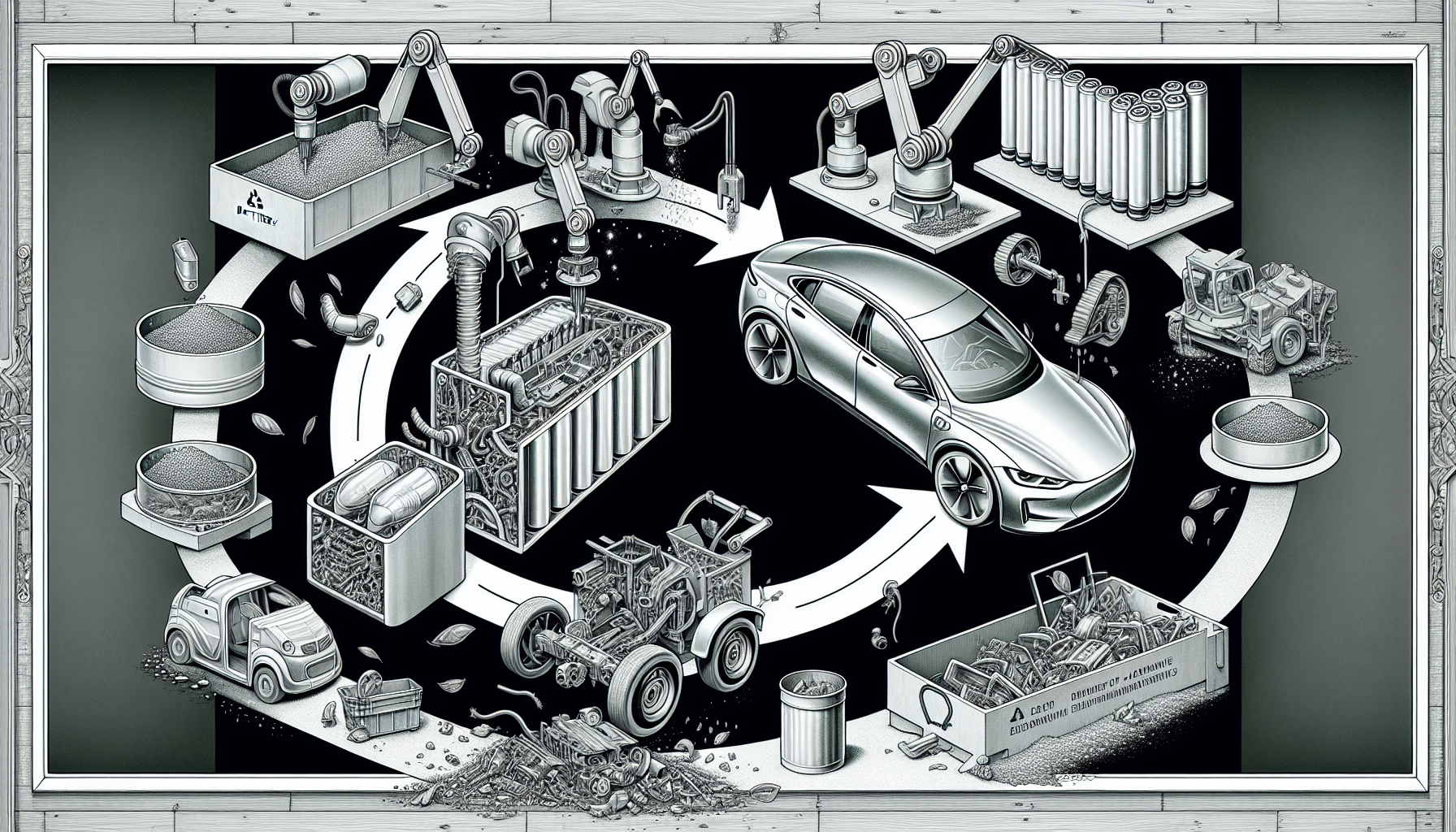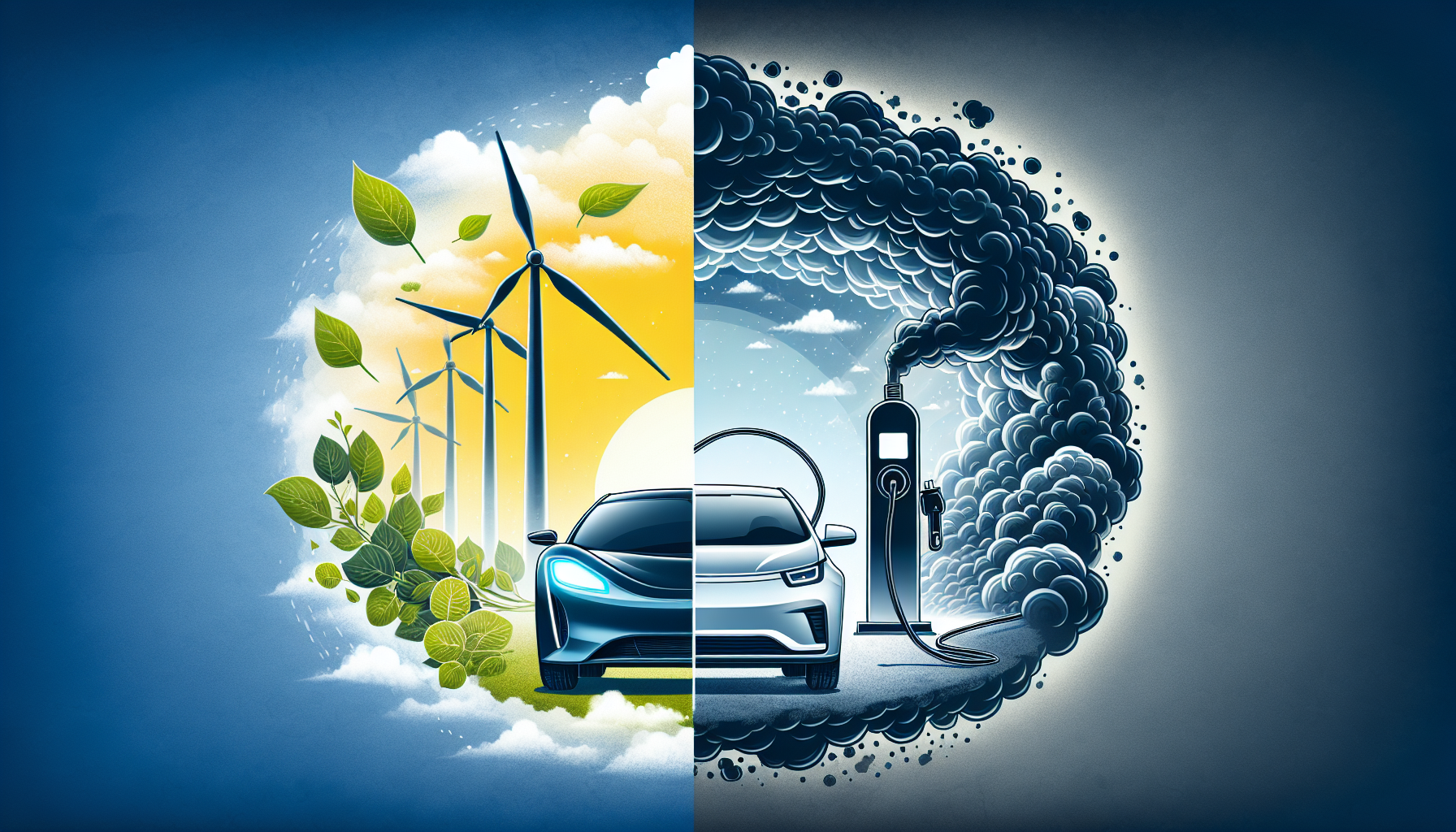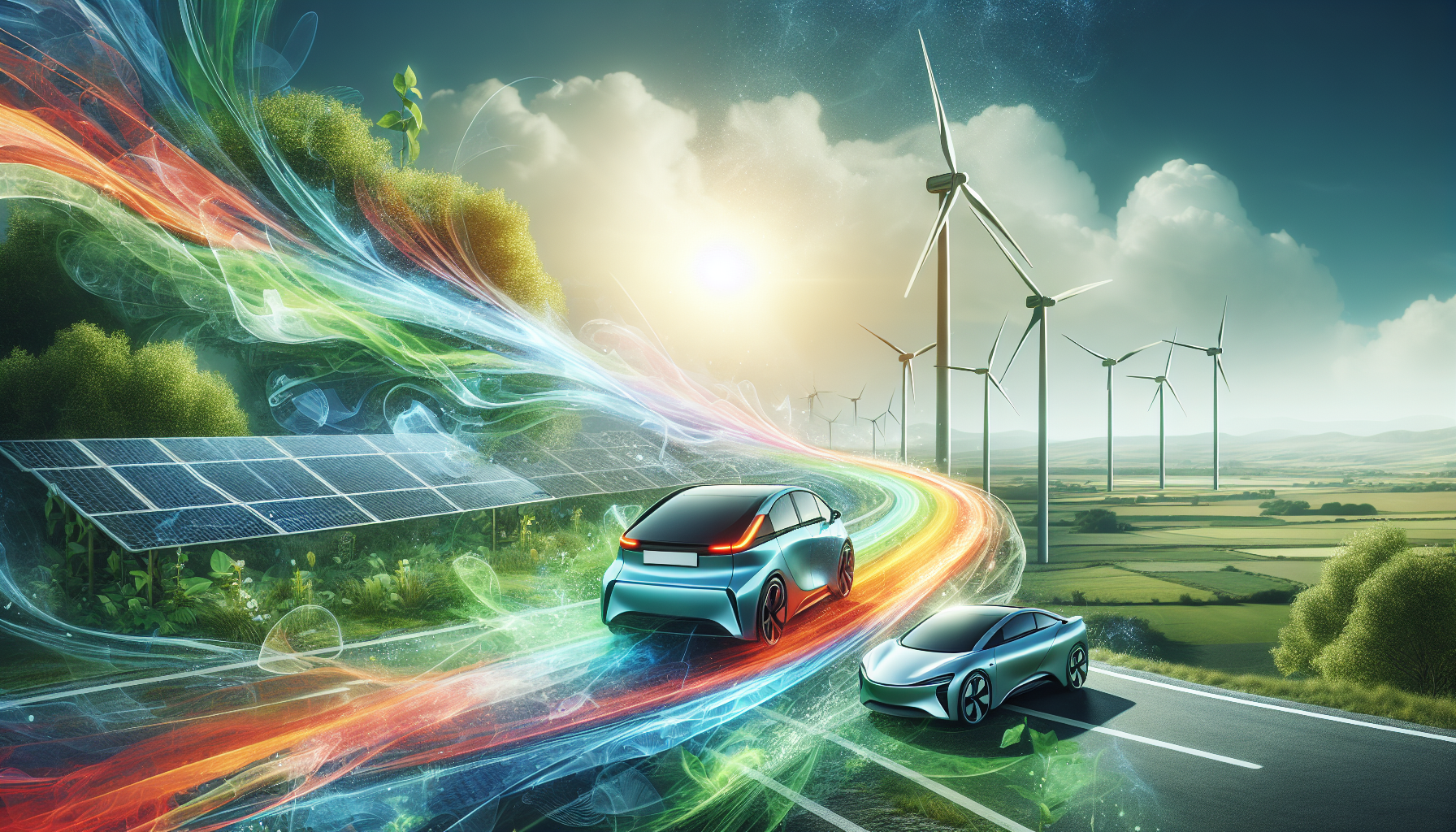Assessing the Environmental Impact of Electric Vehicles: Myths and Realities
Electric vehicles are often hailed for their promise to reduce pollution, but what is the real environmental impact of electric vehicles? This article examines the environmental impact of electric vehicles, focusing on crucial stages—production, usage, and disposal—providing a clear-eyed view on EV’s environmental credentials in today’s and tomorrow’s energy landscapes.
Key Takeaways
-
Electric vehicles (EVs) are environmentally friendlier than traditional combustion engine cars, but the production, operation, and end-of-life cycle of EVs still have a carbon footprint that varies based on energy sources and manufacturing processes.
-
Renewable energy integration into the power grid is essential for maximizing the sustainability of EVs, with innovations in battery technology and smart charging techniques further reducing their environmental impact.
-
Electric vehicles contribute to better urban environmental quality by reducing air and noise pollution, and policy support and expansion of green charging infrastructures are key to promoting their widespread adoption.
Unveiling the Environmental Footprint of Electric Vehicles

Electric vehicles have cruised into the public consciousness as the eco-friendlier alternative to gas guzzlers, but their environmental narrative is not as straightforward as it seems. While it’s true that electric cars are about 50% better for the environment than their traditional gas-powered counterparts, they still leave a mark on our planet. From the moment an EV’s battery takes shape in a factory to its final miles on the road, each stage of its life cycle contributes to its carbon footprint.
It’s a complex journey that requires a closer look at how electric vehicles, battery production, and the electricity grid interplay to create a holistic environmental impact.
The Production Impact: Batteries and Beyond

The road to electric mobility begins long before an EV quietly rolls off the production line. The manufacturing of a Tesla Model 3’s battery, for instance, can account for emissions ranging from 2.5 to 16 metric tons of CO2. When we consider the global landscape, the carbon cost of battery production can vary widely, hinging on the energy sources fueling the process. Moreover, crafting a new electric car can generate roughly 80% more emissions than producing a comparable gasoline vehicle, underscoring the significant environmental impacts that precede an EV’s first charge.
Compounding this is the thirsty nature of lithium mining, a key component in EV batteries, which has raised concerns over water usage and its ecological ramifications.
On the Road: Emissions During Operation

While electric vehicles glide through streets with a promise of zero emissions, their environmental tale doesn’t end there. The reality is that EVs do have an emissions story—it’s just not coming from a tailpipe. Instead, it unfolds in the power plants that energize the grid from which EVs draw their charge. If the electricity fueling these cars comes from fossil fuels, then emissions are merely shifted from the road to the smokestack.
End-of-Life Cycle: Recycling EV Batteries

As the curtain falls on an electric vehicle’s performance, its environmental encore takes place in the battery’s afterlife. The surge in EV adoption heralds a looming wave of used batteries needing recycling or repurposing—a challenge that the industry must prepare for as these batteries reach their end-of-life in the mid to late 2030s.
Before they’re recycled, there’s a silver lining: these batteries can lead a second life powering homes or even feeding energy back to the grid, thus extending their usefulness and mitigating some of their initial environmental cost. The European Union’s consideration of digital product passports for EV batteries is a nod to enhancing the transparency and efficiency of the recycling process, a crucial step in managing the environmental impact of our shift to electric mobility.
The Role of Renewable Energy in Enhancing EV Sustainability

The tapestry of electric vehicle sustainability is interwoven with the threads of renewable energy. As the electricity grid adopts more green energy, the shadow cast by electric vehicles on the environment grows fainter. Picture a future where, by 2050, an electric vehicle could emit a mere 50 grams of CO2 per mile, thanks to the harmonious integration of renewables into our power grid.
In regions already powered by a clean energy mix, the operation of electric vehicles can achieve the zenith of zero greenhouse gas emissions—a testament to the pivotal role of renewable energy in the evolution of electric mobility.
Transitioning to Clean Energy
For electric vehicles to truly claim the mantle of sustainability, the electricity that charges them must be drawn from the wellspring of renewable energy. As of now, our reliance on non-renewable energy sources sits at a high 79%, underscoring the need for a transformative shift towards renewables. The winds of change are blowing, with renewables contributing around 14% to U.S. electricity generation as of 2022, signaling progress in our journey to cleaner power sources.
Smart charging techniques that optimize the use of renewables can further diminish the environmental impact of EV batteries by up to 53%, particularly in areas such as freshwater eutrophication.
Solar and Wind: Partners for Electric Mobility
Harnessing the power of the sun and the force of the wind, solar and wind energy emerge as steadfast allies in the quest for electric mobility. The duo provides a stable and dependable source of energy for EV charging, balancing each other’s fluctuations and ensuring a consistent power supply. Solar panels, adaptable to the energy needs of individual households, offer the flexibility to directly cater to EV charging demands, while wind energy presents a viable option for rural areas, reducing reliance on traditional grid systems.
The green credentials of electric vehicles are amplified when they’re powered by these renewable sources, promising not only a reduction in emissions but also significant air quality improvements.
Comparing Emissions: EVs vs. Gasoline Cars
When pitted against gasoline cars, electric vehicles lead the race in emissions reduction. Throughout their lifetime, a gasoline car can emit over 350 grams of CO2 per mile, while electric vehicles clock in at approximately 200 grams per mile. This disparity is even more pronounced in medium-sized battery electric vehicles (BEVs), which can reduce greenhouse gas emissions by up to 69% in Europe and 34% in India compared to their gasoline counterparts.
The diverse electric vehicle lineup, including pure electric, plug-in hybrid, and fuel-cell variants, is integral to this emissions-cutting endeavor, outperforming their counterparts, conventional vehicles.
Tailpipe Emissions: The Zero-Emission Advantage
Electric vehicles boast a zero-emission advantage that internal combustion engine vehicles can’t match. With no tailpipe emissions, the operation of pure electric vehicles is clean and green, providing a stark contrast to the pollution emitted by conventional cars.
Plug-in hybrids maintain this zero-emission status when running on electric power but will emit some pollutants when the internal combustion engine takes over. This clean operation is a cornerstone in the battle against direct pollution, offering a breath of fresh air in our cities and highways.
Life Cycle Emissions: A Comprehensive View
A full life cycle assessment paints a greener picture for electric vehicles. If renewable sources powered 95% of the electricity grid, emissions from battery electric cars could plummet to less than a third of their current levels. Medium-sized electric vehicles registered today already emit significantly lower greenhouse gases than their gasoline peers, a gap that’s set to widen by 2030 as the grid cleans up its act.
The result is a lifecycle with fewer carbon emissions for electric vehicles, a boon that only grows as we usher in more renewable energy into our power mix.
Innovations Reducing EV Environmental Impacts
Innovation is the lifeblood of progress, and in the realm of electric vehicles, it’s paving the way to reducing environmental impacts. With EV batteries now boasting an in-vehicle lifespan of up to 15 years, and the potential for another decade of use in other applications such as home power or grid support, the environmental narrative is shifting.
The rise of solid-state batteries, supporting over 6,000 cycles, could further extend the life of EV batteries, curbing environmental waste and opening new horizons for sustainable transportation.
Advancements in Battery Technology
The chronicle of electric vehicles is marked by leaps in battery technology, including the development of lithium ion batteries. Solid-state batteries, with their higher energy density and faster charging times, are emerging as game-changers for electric vehicles. The shift from Nickel Manganese Cobalt (NMC) to Lithium Iron Phosphate (LFP) battery chemistry is making EV batteries more efficient, affordable, and environmentally benign.
Promising developments in Sodium-ion (Na-ion) batteries are also enhancing the performance of electric vehicles, particularly in colder climates and for short-range applications.
Sustainable Manufacturing Initiatives
The march toward sustainability in electric vehicle production is underway, with car manufacturers setting up shop in the United States to take advantage of incentives aimed at fostering a greener manufacturing landscape. These initiatives represent a significant step forward in minimizing the environmental impact of EV production, as the industry seeks to align with a more sustainable ethos.
Addressing the Challenges of EV Infrastructure
While electric vehicles promise a greener future, their widespread adoption hinges on the development of a robust EV infrastructure. The environmental concerns surrounding the expansion of charging networks are multifaceted, involving resource consumption and the physical space needed to build new stations.
Ensuring a network of fast-charging options and more ubiquitous charging locations is essential to support the growing demand for electric vehicles.
Building a Green Charging Network
A truly sustainable electric mobility ecosystem demands the creation of a green charging network. To achieve this, renewable energy must be the linchpin of EV charging stations, ensuring that electric vehicles are powered by clean sources from the get-go.
Innovations such as ultra-fast DC and wireless charging, coupled with smart charging strategies, bolster the practicality of electric vehicles while keeping an eye on environmental stewardship.
Policy Support and Incentives
The transition to electric mobility is not solely a technological challenge but also a policy one. The Biden Administration’s $5 billion investment through the bipartisan infrastructure law represents a significant push to expand the number of EV charging stations. Similarly, Australian governments are propelling EV adoption with a suite of incentives, including subsidies and support for public charging networks.
These initiatives are key to achieving the U.S. government’s goal of a 100% green energy grid by 2035, underpinning the shift towards widespread electric vehicle use.
Mitigating Noise and Air Pollution with Electric Vehicles
The adoption of electric vehicles signals more than just a shift in transportation technology—it represents a potential revolution in urban environmental quality. By eliminating tailpipe emissions, electric vehicles are contributing to markedly improved air quality in bustling city centers. Road transport emissions, including harmful substances like carbon dioxide and nitrogen oxides, are notorious for their health impacts, contributing to respiratory issues and even cancer.
Cleaner Air in Urban Environments
Electric vehicles stand at the forefront of the battle for cleaner urban air, as they directly replace internal combustion vehicles. With no tailpipe emissions, they play a direct role in reducing the levels of nitrogen dioxide and carbon monoxide—two pollutants that are particularly detrimental to air quality.
The correlation between the presence of EV charging infrastructure and improvements in air quality is a testament to the broader benefits of adopting electric mobility.
The Silent Benefit: Lower Noise Pollution
Electric vehicles bring with them the silent benefit of reduced noise pollution. Their whisper-quiet operation is a stark contrast to the roar of combustion engines, offering a more serene urban soundscape. To ensure safety, electric vehicles are required to emit a minimum level of sound to alert pedestrians, but this is designed to minimize the increase in noise pollution.
Summary
Throughout this exploration, we’ve navigated the winding roads of electric vehicles’ environmental impact, uncovering a landscape that’s both promising and complex. From the emissions of battery production to the zero-emission operation and the potential for battery recycling, electric vehicles have a multifaceted environmental footprint. We’ve seen how renewable energy is the linchpin for truly sustainable electric mobility, and how innovations in battery technology and manufacturing processes are pushing the boundaries of what’s possible. Addressing the infrastructure challenges and embracing policy support are crucial steps on the path to widespread adoption. Moreover, the additional benefits of improved air quality and reduced noise pollution in urban environments cannot be overstressed. Ultimately, electric vehicles are key players in our quest for a cleaner, quieter, and more sustainable future.
As we stand on the brink of an electric revolution, it’s clear that while challenges remain, the journey toward electric mobility is laden with opportunities for significant environmental benefits. By continuing to innovate, invest in renewable energy, and implement supportive policies, we can ensure that electric vehicles live up to their full potential as champions of sustainability. Let’s charge ahead, mindful of the road behind us, yet focused on the cleaner horizon that electric vehicles promise.
Frequently Asked Questions
How do electric vehicles impact the environment compared to gasoline cars?
Electric vehicles have a significant environmental advantage over gasoline cars, producing fewer emissions during operation and across their life cycle. This is due to their zero tailpipe emissions and lower life cycle emissions, especially as the electricity grid becomes greener.
Can the electricity used to charge electric vehicles come from renewable sources?
Yes, electric vehicles can be charged with electricity from renewable sources such as solar and wind, reducing their environmental impact significantly. This can potentially lead to zero greenhouse gas emissions during operation.
Are there any environmental concerns associated with the production of EV batteries?
Yes, the production of EV batteries does raise environmental concerns due to high CO2 emissions and the water-intensive nature of lithium mining. However, ongoing advancements in battery technology and manufacturing processes are working to address these issues.
What is being done to make electric vehicle infrastructure more environmentally friendly?
Efforts to make electric vehicle infrastructure more environmentally friendly include powering charging stations with renewable energy, developing smart charging strategies, and integrating sustainable materials in charger manufacturing. This will significantly reduce the environmental impact of electric vehicle charging.
How do electric vehicles help with air and noise pollution in cities?
Electric vehicles help improve air quality in cities by producing no tailpipe emissions, which reduces hazardous pollutants. Additionally, their quiet operation contributes to a significant decrease in noise pollution, creating a more peaceful urban environment.








